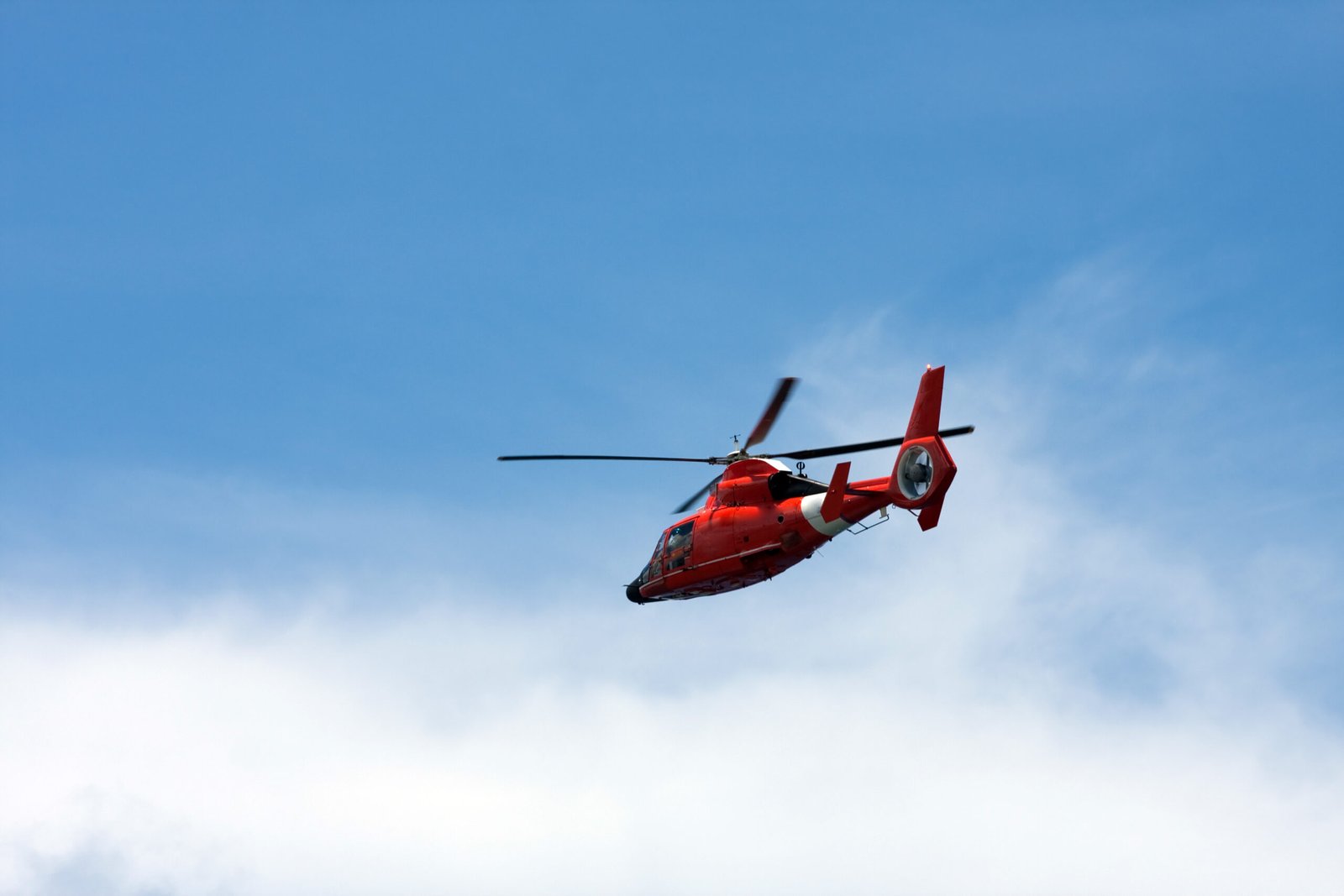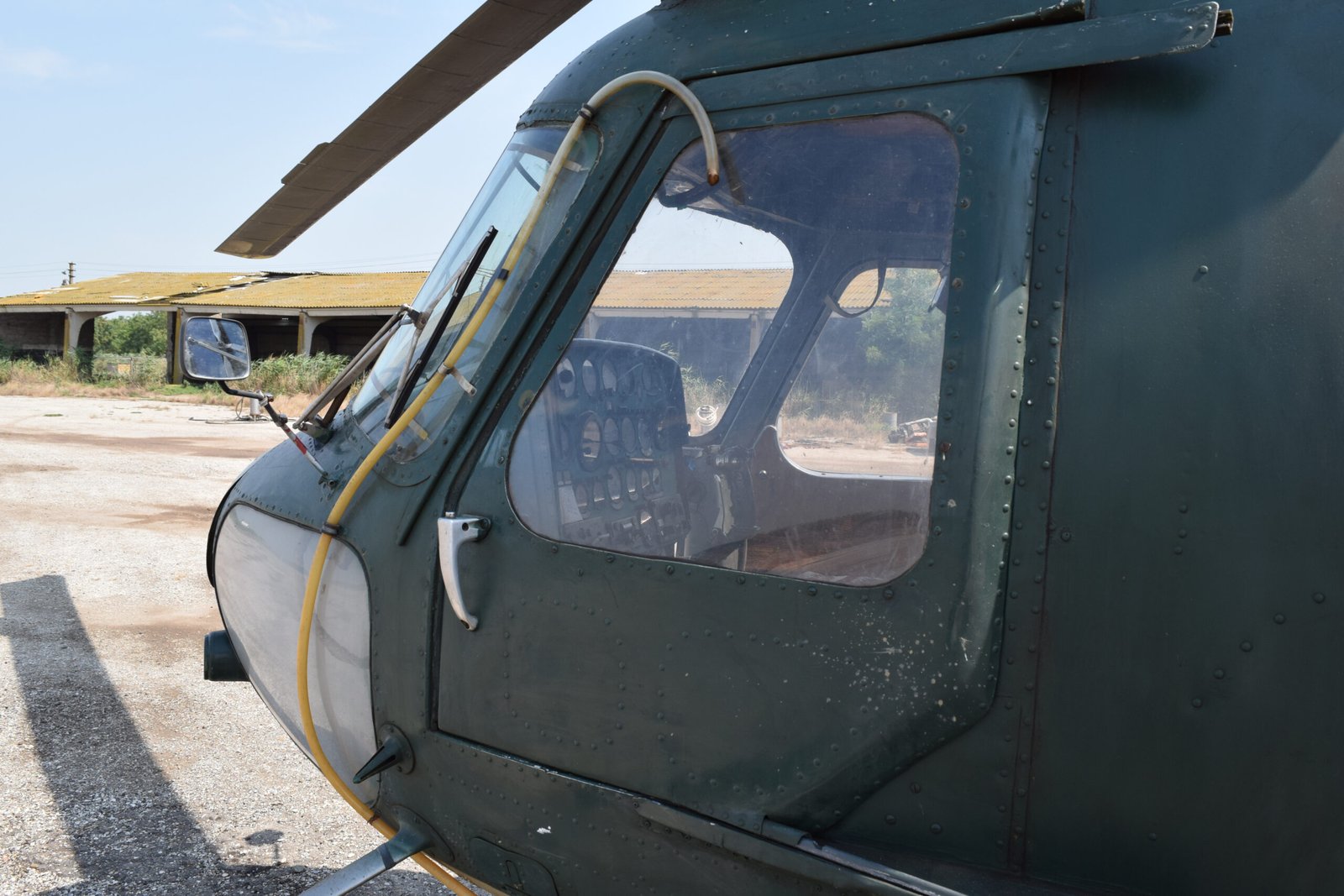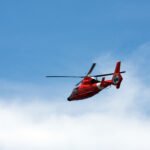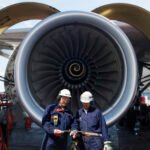future of aviation
Soaring High: The Future of Aviation Technology
Aviation is a field that continuously evolves, driven by advancements in technology and an insatiable quest for efficiency and safety. As we soar into the future, it’s essential to understand not only the innovative technologies shaping the industry but also the educational pathways fueling this transformation. Let’s explore the types of aviation schools available today, some must-visit blogs and websites, and delve into FAA flight schools that are paving the way for aspiring aviators.
*Types of Aviation Courses**
When it comes to aviation education, there are various types of courses designed to cater to different interests and career paths. Here’s a snapshot:
1. **Pilot Training Programs**: These are typically offered by flight schools where students learn everything from basic flying skills to advanced navigation techniques. Courses can range from private pilot licenses (PPL) to commercial pilot licenses (CPL) and beyond.

2. **Aircraft Maintenance Engineering**: For those inclined towards mechanics, these programs teach students how to maintain and repair aircraft systems, ensuring safety and compliance with regulations.
3. **Aerospace Engineering**: This course focuses on the design and development of aircrafts or spacecrafts. Students delve into subjects like aerodynamics, propulsion systems, and materials science.
4. **Air Traffic Control Training**: Vital for maintaining safe airspace management, these courses prepare students for roles as air traffic controllers through simulations and real-world training experiences.
5. **Flight Attendant Training**: Catering primarily to customer service in the skies, this program covers emergency procedures, safety protocols, and passenger relations.
Each type of course offers unique insights into specific aspects of aviation, providing a well-rounded educational experience tailored to individual career aspirations.
*Essential Aviation Blogs & Websites**
Staying updated with industry trends is crucial for anyone involved in aviation. Here are some noteworthy resources worth following:
**AirlineReporter.com**: This blog provides insights on airline news with a focus on passenger experiences.
**The Air Current**: A site dedicated to in-depth analysis concerning commercial aviation trends.
**Flying Magazine**: An authoritative source covering pilot training tips alongside reviews on aircraft.
**AvGeekery.com**: A fun blog filled with stories from enthusiasts about all things planes.
On social media platforms like Twitter or Instagram, you can follow accounts like @AviationWeek or @aircraftspotting for real-time updates on industry developments.
*FAA Flight Schools & Simulators**
The Federal Aviation Administration (FAA) regulates flight training across America ensuring high standards in quality education at various accredited flight schools. These institutions often utilize state-of-the-art simulators that provide students with realistic flying experiences without leaving the ground.
For those looking for reputable FAA-certified flight schools, consider reaching out to:
1. **Embry-Riddle Aeronautical University** – Known globally for its aerospace programs.
2. **ATP Flight School** – Focused on fast-track professional pilot training.
3. **California Aeronautical University** – Offers both online classes along with hands-on training opportunities.
Simulation technology has come leaps forward too; devices like full-motion simulators now allow learners to practice emergency scenarios or complex navigational tasks safely before taking control of actual aircraft.
In conclusion, as we look up toward an ever-evolving horizon in aviation technology—be it through innovative learning pathways or cutting-edge tools—it’s clear that tomorrow’s aviators will be better equipped than ever before! Whether your dream involves soaring through clouds as a pilot or maintaining sophisticated machinery as an engineer—there’s never been a better time than now to embark on your journey within this exhilarating field!
Soaring Skies: The Future of Sustainable Aviation Technology
Aviation, an industry synonymous with innovation and adventure, is on the brink of a remarkable transformation. As we hurtle toward a more sustainable future, the integration of cutting-edge technology will redefine how we think about flying. But before we dive into this thrilling era, let’s explore how aspiring aviators can prepare for these changes through various educational paths and resources.
*Aviation Schools by Types of Courses**
Diverse educational programs offer a multitude of courses that cater to every facet of aviation. At the forefront are flight training schools, which primarily focus on preparing students for piloting careers. These institutions provide hands-on flight experience complemented by ground school instruction covering navigation, meteorology, and regulations.

Then there are aviation management programs that equip future leaders with knowledge in finance, operations, and logistics within the aviation sector. For those interested in aircraft maintenance, airframe and powerplant (A&P) schools deliver specialized training to ensure safety and efficiency in aircraft operations.
Furthermore, universities often offer degree programs in aerospace engineering, focusing on designing and developing aircraft technologies. This sector is crucial for fostering innovations that enhance sustainability—such as electric propulsion systems or advanced aerodynamics.
*Lists of Aviation Blogs, Websites, Social Media Sites**
Staying informed is vital in an ever-evolving field like aviation. Fortunately, numerous blogs and websites provide insights into current trends and advancements. Noteworthy blogs include “Airliners.net,” where enthusiasts share photographs alongside discussions about airline operations worldwide. Similarly, “The Points Guy” offers travel tips while emphasizing sustainability initiatives within airlines.
For those who prefer concise updates through social media channels, Twitter has become a hub for aviation news; accounts like @FlightGlobal share real-time information on industry developments. Additionally, Instagram accounts such as @aviationdaily showcase stunning imagery from around the globe while highlighting eco-friendly practices adopted by various airlines.
YouTube also hosts a plethora of channels dedicated to aviation topics—like “Mentour Pilot,” wherein professional pilots discuss experiences while also addressing the importance of environmental stewardship in their profession.
*FAA Flight Schools/Airplane Schools/Simulators**
When it comes to official flight training in the United States, FAA-approved flight schools are pivotal. They adhere to strict regulations ensuring quality education for aspiring pilots. Some renowned institutions include Embry-Riddle Aeronautical University and ATP Flight School—both known for their comprehensive programs that combine practical flying experience with theoretical knowledge.
Additionally, simulation technology is revolutionizing pilot training methodologies. High-fidelity simulators allow students to practice complex maneuvers without leaving the ground—a critical aspect when considering emergency scenarios or learning new aircraft systems. Many modern flight schools incorporate simulation time as part of their curriculum to enhance overall proficiency while minimizing costs associated with actual flight hours.
In conclusion, as we look skyward towards sustainable aviation’s bright future filled with electric planes and eco-efficient technologies, it’s imperative that tomorrow’s pilots receive robust training through diverse educational avenues available today. With countless resources at their fingertips—from insightful blogs sharing industry wisdom to FAA-certified schools providing top-notch instruction—aspiring aviators are well-positioned to not just witness but actively participate in this exciting new chapter of aviation history! The sky may not be the limit after all; instead, it could be just the beginning!
Soaring High: The Future of Aviation Technology
The aviation industry is on the cusp of a technological revolution that promises to reshape how we think about air travel. As innovation takes flight, aspiring pilots and aviation enthusiasts are presented with unprecedented opportunities for education and growth. In this post, we’ll explore different types of aviation schools, delve into essential blogs and websites, and highlight FAA-certified flight schools.
### Types of Aviation Courses
Aviation schools offer a variety of courses tailored to diverse interests within the field. Here are some key categories:
1. **Pilot Training Programs**: These courses provide foundational knowledge for aspiring pilots. They often include ground school, flight training with certified instructors, and simulator sessions that cover everything from basic maneuvers to advanced navigation techniques.
2. **Aircraft Maintenance Engineering**: For those inclined towards the technical side of flying, these programs focus on aircraft systems, troubleshooting, maintenance protocols, and safety regulations. Students gain hands-on experience working on real aircraft.

3. **Aviation Management**: This course streamlines the business side of aviation by teaching students about airport operations, airline management, regulatory compliance, and marketing strategies specific to the industry.

4. **Air Traffic Control Training**: Critical for maintaining safety in busy airspaces, these programs train students in communication skills, radar operation, and crisis management necessary for effective air traffic control.
5. **Drone Technology Courses**: With unmanned aerial vehicles gaining traction across various sectors—such as delivery services and agriculture—these courses prepare students for careers in drone piloting and operations.
### Essential Aviation Blogs & Websites
Staying informed is crucial in an ever-evolving field like aviation. Here’s a curated list of blogs and websites that avid followers should bookmark:
**Flying Magazine (flyingmag.com)**: A treasure trove for enthusiasts featuring news articles, product reviews, pilot stories, and tips for improving flying skills.
**Airline Reporter (airlinereporter.com)**: This blog offers insights into airline industry news along with personal experiences shared by passionate travelers.
**AvWeb (avweb.com)**: A leading online resource providing up-to-date information on general aviation news including product announcements and technology advancements.
**PilotWorkshops (pilotworkshops.com)**: Focused on enhancing pilot proficiency through workshops led by experienced aviators covering everything from navigation to emergency procedures.
**YouTube Channels like “FlightChops” or “Mentour Pilot”**: Engaging video content that brings flying experiences directly to your screen while offering tips from seasoned pilots.
Social media platforms also serve as valuable resources; following accounts like @AviationWeek or @FlybyWireSim can keep you informed about developments directly impacting the industry!
### FAA Flight Schools & Simulators
When it comes to obtaining your pilot’s license or advancing your skills further, FAA-certified flight schools are indispensable. These organizations meet stringent federal regulations ensuring quality training:
**ATP Flight School**: Known for its comprehensive programs focusing on Airline Transport Pilot certifications.
**Embry-Riddle Aeronautical University**: A leader in aerospace education offering degrees ranging from aeronautics to engineering.
**American Flyers**: This institution provides personalized instruction catering to both beginner pilots and professionals looking to refine their skills.
Additionally, simulators have become an integral part of pilot training programs. Advanced flight simulation technology allows trainees to practice complex scenarios safely before taking off into real skies—a critical component in ensuring safe aviators ready for any situation they may face once airborne.
In conclusion, as we soar into the future of aviation technology—with its promising educational paths and groundbreaking innovations—the sky truly is not the limit; it’s just the beginning! Whether you’re looking to fly high yourself or merely stay informed as an enthusiast, now is an exciting time to engage with all facets of this dynamic industry!
The Skyline Promise: Exploring the Fascinating World of Urban Air Mobility
The horizon is shifting, and with it comes an exhilarating revolution in aviation—urban air mobility (UAM). This dynamic field blends cutting-edge technology with the promise of transforming how we navigate our cities. As we delve into this fascinating world, it’s essential to understand that the future of flight not only relies on innovative aircraft but also on a robust foundation built through aviation and technology training.

To embark on this journey, aspiring aviators must familiarize themselves with various educational avenues. Traditional flight schools have long served as pillars for pilot training, but now they are evolving alongside new technologies. The Federal Aviation Administration (FAA) has recognized the importance of adapting to these changes by accrediting numerous flight schools across the country that focus on emerging sectors like UAM. These institutions offer comprehensive programs that include hands-on experience with cutting-edge simulators and real-world flying scenarios.
Simulators play a crucial role in modern pilot training; they provide invaluable opportunities for students to hone their skills without stepping foot into an actual aircraft. With advancements in virtual reality (VR) and computer-generated environments, pilots can practice complex maneuvers or emergency protocols safely and effectively. Schools such as Embry-Riddle Aeronautical University and ATP Flight School are at the forefront, integrating technology into their curricula to produce highly skilled pilots ready for tomorrow’s challenges.
In addition to formal education, staying informed about industry trends is vital for anyone passionate about aviation and urban air mobility. Engaging with online communities can enhance your knowledge base immeasurably. There’s a wealth of resources available through blogs, websites, and social media platforms dedicated to aviation enthusiasts.
Some noteworthy blogs include:
1. **Flying Magazine** – A classic source offering insights into both recreational flying and technical advancements.
2. **Air & Space Magazine** – Delves deeper into aeronautics history while keeping readers updated on contemporary innovations.
3. **PILOT Magazine** – Focused specifically on pilots’ experiences, gear reviews, and operational tips.
For those who prefer websites over traditional blogging formats, consider visiting:
**Aviation Week Network** – Comprehensive coverage of all things aerospace including commercial aviation updates.
**AvGeekery.com** – A hub for passionate aviation geeks showcasing everything from airline news to aircraft spotting tips.
Social media platforms are also treasure troves for real-time information and community interaction within the aviation sphere:
**Instagram** boasts aerial photography accounts that showcase stunning views from above.
**Twitter** serves as a fast-paced platform where industry professionals share breaking news.
**YouTube channels like “Mentour Pilot” or “Captain Joe” provide engaging visuals coupled with informative commentary about flying.
As urban air mobility continues its ascent—the promise of personal drones zipping through cityscapes becoming more tangible—it is imperative that budding aviators embrace both traditional learning paths and modern digital landscapes.
With every new innovation comes responsibility; thus, pursuing quality education remains paramount in ensuring safety within UAM systems. Whether you’re navigating through FAA-accredited flight schools or exploring dynamic online resources—a commitment to continuous learning will prepare you for this remarkable shift in how we view transportation.
So strap in! The skyline awaits your exploration—a mesmerizing blend of technology promising a future where urban skies become just as bustling as city streets below!
Flying Into the Future: The Latest Innovations in Aviation Technology
The aviation industry stands on the brink of a technological revolution, blending tradition with cutting-edge innovations. From training pilots with advanced simulators to the rise of drones and online learning platforms, the future is taking flight in ways we could hardly imagine just a decade ago. Let’s delve into some of the latest advancements transforming how we approach aviation.

*Aviation and Technology Training: Simulators**
Gone are the days when aspiring pilots had to rely solely on real aircraft for training. Today, flight simulators have become an integral component of pilot education. These sophisticated tools replicate real-world flying conditions with stunning accuracy, allowing trainees to experience everything from routine maneuvers to emergency situations without leaving the ground.
Modern simulators incorporate virtual reality (VR) technology, making training sessions immersive and realistic. Learners can engage in simulated flights that mimic weather changes or mechanical failures, thus better preparing them for actual flight scenarios. This innovative training not only enhances safety but also optimizes costs associated with traditional flight instruction.
*Essential Aviation Blogs and Resources**
For those who want to stay informed about ongoing developments in aviation technology, numerous blogs and websites serve as valuable resources:
1. **The Points Guy** – Focuses on travel tips and airline news.
2. **Airliners.net** – A community-driven site showcasing photos and discussions on aviation topics.
3. **Aviation Week** – Offers insights into aerospace trends, technology advancements, and industry analysis.
4. **FlightGlobal** – Provides updates on airlines, aircraft manufacturers, and regulatory changes.
5. **Jetwhine** – A mix of opinions on aviation issues along with entertaining stories from pilots.
Social media platforms like Twitter feature hashtags such as #AvGeek or #PilotLife that connect aviation enthusiasts globally. Following accounts of airlines, flight schools, or influential aviators can keep you updated while also building your network within this exciting field.
*Online Aviation Courses: Ground Schools & Careers**
The advent of online education has made it easier than ever to pursue a career in aviation without geographical constraints. Many organizations offer comprehensive online courses that cover foundational knowledge essential for aspiring pilots or those looking to start careers in ground operations.
These courses often include Ground School programs that prepare students for FAA certification exams while providing flexible scheduling options—ideal for busy individuals juggling work and study commitments. Platforms like Coursera or Udemy host various programs ranging from introductory pilot training to specialized subjects such as air traffic control or aircraft maintenance.
With growing demand for qualified pilots due to global travel resuming post-pandemic, many airlines actively recruit trained professionals through dedicated job boards like PilotJobs.com or Avjobs.com.
*The Drone Revolution**
Drones have emerged as one of the most intriguing facets of modern aviation technology. With applications ranging from aerial photography to package delivery and agricultural surveillance, these unmanned aerial vehicles (UAVs) are reshaping industries across the board.
Regulatory bodies like the Federal Aviation Administration (FAA) provide guidelines around drone usage ensuring safety while promoting innovation in this sector. Their website offers comprehensive resources about drone registration processes along with information concerning Part 107 licensing—a must-have for commercial drone operators.
In conclusion, as we fly into an exciting future where technology meets traditional practices within aviation, staying updated through reliable sources becomes vital for enthusiasts and professionals alike. Whether it’s embracing simulator training or exploring online courses tailored specifically for aviation careers—or even navigating the new world of drones—the sky truly is not the limit; it’s just the beginning!





